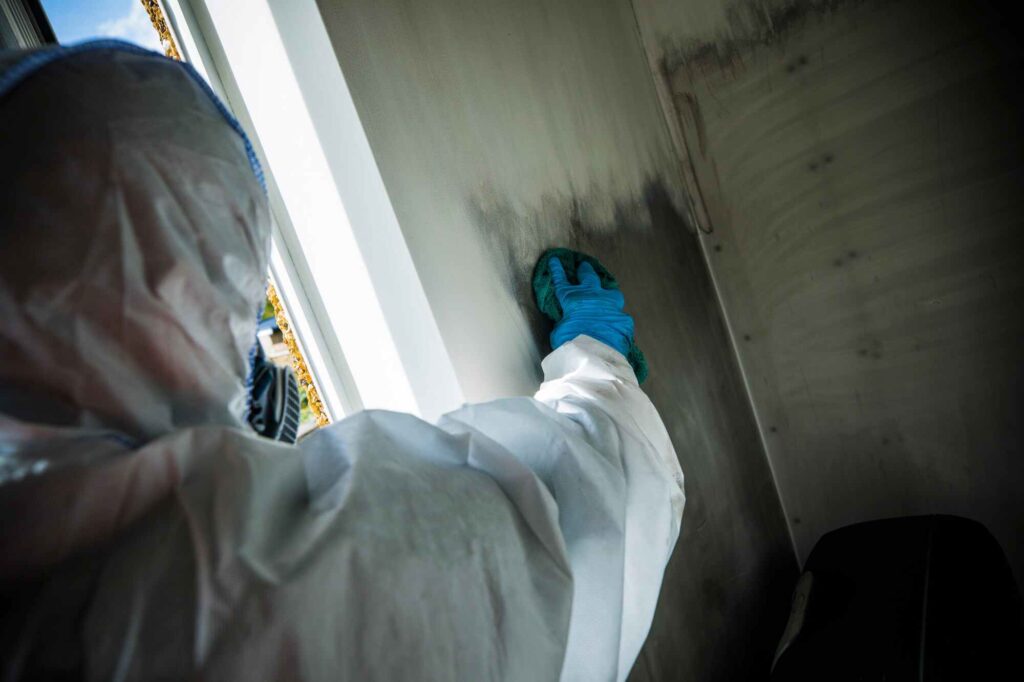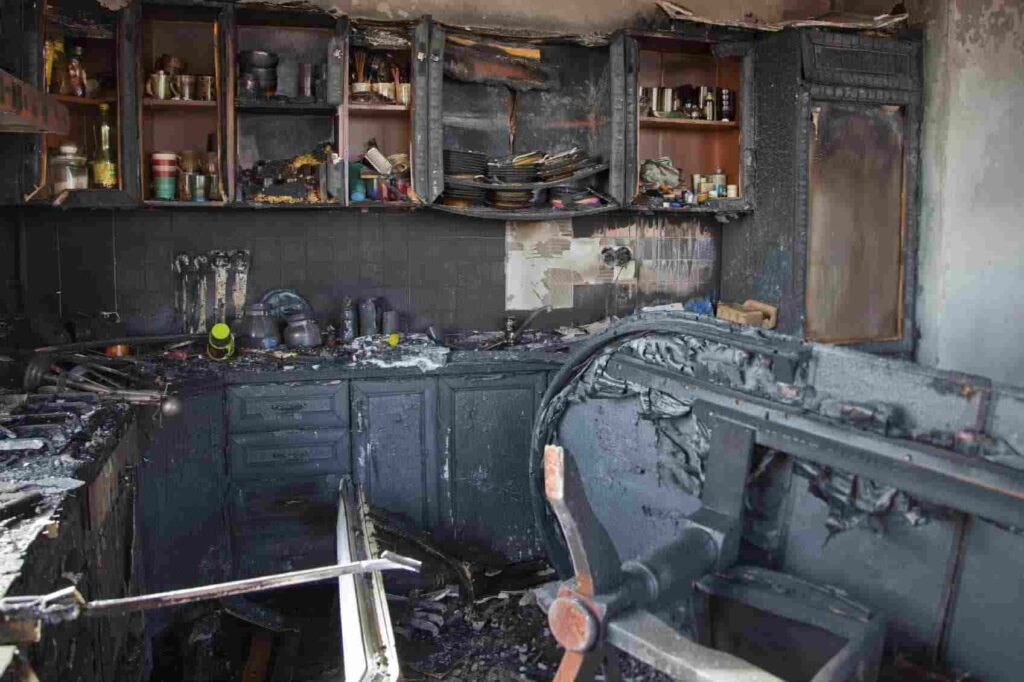Blogs
The Hidden Dangers of Soot and Ash After a Fire in Plano

In the aftermath of a fire, the visible scars on Plano’s landscape often overshadow the hidden dangers lingering in the form of soot and ash. While the immediate threat of flames may subside, microscopic remnants weave an intricate web of unseen perils, posing risks to both human health and the environment. Soot, composed of fine particles, infiltrates indoor spaces, potentially causing respiratory issues, while ash, laden with diverse toxins, can contaminate soil and water sources. This exploration delves into the intricacies of these often underestimated threats, emphasizing the imperative of understanding and addressing the persistent risks that unfold in the aftermath of fires in Plano. The silent aftermath extends beyond the visible, demanding attention to the deceptive nature of these residues. Their potential for long-term consequences underscores the need for comprehensive cleanup strategies and sustained vigilance. As this examination unfolds, it aims to shed light on the multifaceted dimensions of the hidden dangers of soot and ash, urging communities to adopt proactive measures in the face of seemingly innocuous remnants. The goal is to cultivate awareness, instigate informed recovery efforts, and pave the way for resilient strategies that prioritize the long-term well-being of both residents and the environment in the wake of fires in Plano.
Unveiling Perils: Soot and Ash Aftermath in Plano
As the flames subside, a silent menace lingers in Plano. Explore with Intensa Dry the hidden dangers of soot and ash after a fire, where microscopic remnants pose risks to health and environment.

Unseen Threats: The Lingering Menace of Soot and Ash in Post-Fire Environments
After a fire incident services in Plano, the visible destruction may lead residents to underestimate the persistent threats posed by the often-overlooked byproducts—soot and ash. These seemingly innocuous remnants carry hidden dangers that extend far beyond the flames. Soot particles, composed of carbon and other fine particles, can infiltrate indoor spaces and linger in the air, posing significant health risks. Ash, on the other hand, can contain a mix of toxic substances depending on the materials burned, introducing environmental hazards that may not be immediately evident. This exploration delves into the insidious nature of these hidden threats, shedding light on their potential health and environmental consequences long after the flames have been extinguished.
Beyond the Flames: Understanding the Ongoing Risks Posed by Soot and Ash Residue in Plano
While the immediate danger of a fire may dissipate once it’s extinguished, the aftermath brings forth a different set of challenges, particularly with the often underestimated dangers of soot and ash residue. This heading explores the intricate details of how these residues can infiltrate homes, contaminate air and water supplies, and even lead to long-term health issues. Understanding the chemical composition of soot and ash is crucial to recognizing the potential risks they pose to both physical well-being and the broader ecosystem. By delving into the science behind these substances and their interactions with the environment, we aim to illuminate the ongoing threats that may elude common perception in the aftermath of a fire in Plano.
Invisible Perils: The Health Hazards of Unnoticed Soot and Ash After a Fire Incident
This segment delves into the specific health risks associated with exposure to soot and ash after a fire in Plano. Soot particles, often invisible to the naked eye, can penetrate deep into the respiratory system, leading to respiratory issues such as asthma, bronchitis, and other respiratory diseases. The chemical composition of ash may include harmful substances like heavy metals, posing additional health threats. From short-term irritations to potential long-term health complications, this exploration uncovers the often-invisible perils that residents face even when the flames have subsided. It highlights the importance of post-fire cleanup measures and health precautions to mitigate these hidden health hazards.
Silent Consequences: Examining the Unseen Dangers of Soot and Ash in Plano’s Fire Aftermath
Moving beyond the immediate health concerns, this section explores the broader environmental consequences of soot and ash residue in Plano’s post-fire landscapes. Soot, with its dark color, can contribute to increased absorption of sunlight, potentially exacerbating local climate effects. Ash, when not properly managed, may contaminate soil and water sources, impacting vegetation and aquatic life. By examining these silent consequences, we shed light on the interconnected web of environmental repercussions that extend beyond human health, emphasizing the need for comprehensive strategies to address the unseen dangers in the aftermath of a fire.
Residual Risks: Uncovering the Hidden Threats of Soot and Ash Residue in Plano’s Fire-affected Areas
Residual risks persist in areas that have experienced a fire in Plano, and this section delves into the factors contributing to the long-lasting threats of soot and ash residue. Despite the visible restoration efforts, microscopic remnants can continue to pose dangers. Soot particles settling on surfaces can create a fine layer that, if disturbed, may re-enter the air, perpetuating health risks. Moreover, ash residue can have cascading effects on ecosystems, affecting plant life and water quality. By uncovering these hidden threats, we aim to underscore the importance of thorough and sustained cleanup efforts, ensuring the safety of residents and the resilience of the environment in fire-affected areas.
The Aftermath Unveiled: How Soot and Ash Persistently Endanger Lives and Property in Plano
Unveiling the persistent dangers in the aftermath of a fire, this section takes a closer look at how soot and ash can continue to endanger lives and property. Soot’s ability to infiltrate building structures may compromise indoor air quality, leading to long-term health issues for occupants. Ash residue, if not properly managed, can corrode materials and infrastructure, potentially weakening the structural integrity of buildings. By examining the ongoing threats to both human health and property, we shed light on the importance of vigilant post-fire management and recovery strategies in Plano. This knowledge is crucial for residents, local authorities, and disaster response teams to adopt measures that go beyond the immediate aftermath of the fire.
The Unseen Enemy: Health and Environmental Implications of Soot and Ash Post-Fire in Plano
This section delves into the dual nature of soot and ash as both a health risk and an environmental threat. Unseen to the naked eye, these remnants can become insidious enemies with far-reaching consequences. The health implications range from respiratory issues to potential carcinogenic effects, emphasizing the need for thorough health assessments in the aftermath of a fire. Simultaneously, the environmental impact encompasses soil degradation, water contamination, and disruptions to local ecosystems. By understanding the multifaceted implications of this unseen enemy, communities can better appreciate the necessity of comprehensive strategies for recovery and rebuilding.
Innocuous Appearance, Hidden Dangers: The Deceptive Nature of Soot and Ash After Fires in Plano
This heading explores the deceptive aspect of soot and ash, which might appear innocuous but conceals inherent dangers. Despite the absence of flames, the microscopic remnants can silently compromise air quality and environmental integrity. This section emphasizes the importance of public awareness and education to dispel the misconception that the danger has passed once the fire is extinguished. By unraveling the deceptive nature of these residues, we aim to empower residents and authorities in Plano to take proactive measures in assessing and mitigating the hidden dangers that persist in the aftermath of a fire.

Health Risks in the Ashes: Unveiling the Hidden Threats Lurking in Plano’s Fire-Scarred Landscapes
Focusing specifically on ash residues, this section sheds light on the health risks embedded in the ashes of fire-scarred landscapes in Plano. Ash, containing a mix of potentially toxic substances, can pose direct threats to human health through contact or ingestion. Additionally, it can seep into water sources, affecting water quality and posing indirect health risks. Unveiling these hidden threats underscores the importance of targeted cleanup efforts and ongoing monitoring to safeguard both the immediate and long-term well-being of residents in fire-affected areas. When faced with the aftermath of a fire in Plano, it’s crucial to prioritize safety and health by understanding the hidden dangers of soot and ash; therefore, when choosing a reliable fire damage restoration company in Plano, consider those that are well-versed in addressing the specific risks associated with soot and ash to ensure a thorough and safe restoration process.
Underestimated Menace: The Long-term Consequences of Soot and Ash Exposure in Plano’s Fire Recovery
Concluding the exploration, this section addresses the often underestimated long-term consequences of exposure to soot and ash during the recovery phase. Residents and responders involved in cleanup efforts may unknowingly expose themselves to health risks, and the environmental impact may extend for years. Understanding the potential for delayed health effects and persistent environmental harm emphasizes the need for sustained monitoring, healthcare initiatives, and ongoing community support in Plano’s journey towards comprehensive fire recovery.
FAQ’S
Q: What are the immediate health risks associated with soot and ash exposure?
A: Soot particles can cause respiratory issues, while ash may contain toxins. Both pose immediate health risks, including respiratory diseases and skin irritations.
Q: Can soot and ash impact indoor air quality?
A: Yes, soot particles can infiltrate indoor spaces, compromising air quality. Regular cleaning and proper ventilation are crucial to mitigate these risks.
Q: How long do the hidden dangers of soot and ash persist?
A: Soot and ash remnants can pose risks for an extended period, potentially causing health and environmental hazards for weeks to months after a fire.
Q: What steps can residents take to protect themselves post-fire?
A: Residents should use protective gear during cleanup, ensure proper ventilation, and seek professional assistance for thorough and safe removal of soot and ash.
Q: How does ash residue affect the environment in Plano?
A: Ash residue can contaminate soil and water, impacting local ecosystems. It’s crucial to implement comprehensive cleanup strategies to prevent long-term environmental degradation.
Conclusion
In conclusion, the hidden dangers of soot and ash after a fire in Plano underscore the importance of informed awareness and strategic action. Beyond the visible devastation, these often underestimated residues pose ongoing threats to both human health and the environment. Soot infiltrates indoor spaces, causing respiratory issues, while ash, laden with potential toxins, can contaminate soil and water. The deceptive nature of these remnants demands sustained vigilance, comprehensive cleanup efforts, and heightened public awareness. Recognizing the enduring risks, communities can forge resilient recovery plans that prioritize long-term health and environmental well-being, ensuring a safer, more informed response to the aftermath of fires in Plano and beyond. Moreover, the long-term consequences of exposure to soot and ash necessitate proactive measures, including continued monitoring, healthcare initiatives, and community support during the recovery process. Emphasizing the importance of thorough post-fire assessments, the interconnectedness of these hidden threats to indoor air quality, public health, and ecological stability becomes evident. As Plano and similar communities embark on recovery journeys, the knowledge gleaned from understanding these unseen dangers serves as a blueprint for resilient strategies that extend beyond immediate restoration efforts. By unraveling the complexities of post-fire hazards, this awareness becomes a catalyst for fostering a safer and more resilient future in the face of unforeseen environmental challenges.

